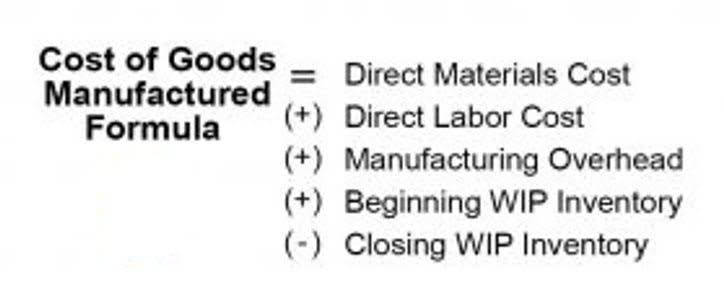
Crush and ferment costs, which may include payroll, supplies, allocated overhead, and depreciation or rent related to crush equipment, should only be allocated to the current vintage crushed. On the other hand, cellar aging costs are typically shared by all wines in the cellar. These are most commonly allocated to the wines based on a weighted average number of gallons in the cellar. Under this method, the cost of each inventory item is tracked from the time of purchase or production through the time the wine is bottled. It relies on accurate data input and recordkeeping to trace costs through the manufacturing process.

What is the best bookkeeping software for small businesses?
Key components of wine accounting for a winery include cost of goods sold (COGS), inventory management, and production costs. Accurate inventory management ensures proper stock levels and valuation, while tracking production costs helps in pricing strategies and profit maximization. Winery owners can work with the winery’s internal accounting or the bookkeeper to understand production costs and how they impact cash balances and cash flow. Depending on growth plans or trajectory, the owner should have an understanding of what that growth means to the cost structure of the winery and the cash flow resources that will be required to fund that growth. Owners should decide who is responsible for evaluating costs and making purchasing decisions.
Bookkeeping Vs. Accounting: What’s The Difference?
In other words, management reports are the diagnostics on your winery’s financial health. Generally speaking, before switching or adding systems, wineries should undertake a system needs assessment and analysis, ideally utilizing outside expertise, to make the most cost-effective decision. An ERP system would require all departments use the same system, so winery operators should verify that all departments agree upon the chosen system.
Major categories of winery costs

Wineries may choose to utilize other industry contacts or a CPA with wine industry experience to discuss the best approach for the situation. An outside entity can offer an unbiased perspective on missed costs and alternative ways to allocate the identified costs. The process of applying overhead costs should evolve over time as operations become more complex, and so too should the allocation methodology—without negatively impacting consistency. winery bookkeeping It’s also important that financial reporting disclosures provide transparency about inventory costing, methods, assumptions, and significant estimates. Accounting’s responsibilities should also include providing current product cost reporting to management and the sales department to enable informed pricing decisions. Common mistakes include not keeping accurate records, neglecting to track all expenses, and misunderstanding tax laws.
To better understand the profitability of the winery’s tasting room operations, wineries should account for tasting room activities as a sub-category within their selling expenses. The accounting department for these wineries usually has a solid costing system in place and may consider using standard costing if their costs are stable and relatively predictable. If standard costing is used, these should be monitored regularly and adjusted as necessary to be in accordance with U.S. Here, we break down wineries by size, so you can see where you stand—and learn how to understand your cost of goods sold (COGS) and gain greater insight into how production and costs are impacting your bottom line. We offer professional, personalized service at prices that entrepreneurs and small businesses can afford. Every client engagement starts with a one-on-one consulting session with our founder and president, Donna Brock, and Donna remains personally involved in every project for as long as you remain a client.
Understanding Your Costs: Tips for Wineries of All Sizes
- Financial reporting operates under GAAP guidelines and allows your company to remain compliant with policy boards.
- Subsequently, Brent transitioned into multiple financial roles within both large wine enterprises and small, family-run businesses.
- Since then, though, the unauthorized immigrant population has grown again, reaching 11.0 million in 2022.
- The accounts payable process can also be tough for wineries to negotiate.
- First, wines could be kept in storage for more than one year, so you have to allocate costs not just to several types of wine, but also to several vintages of each varietal.
- You need a great bookkeeper to help you continue to maximize your business potential.
Be sure to include a summary of the business to start, and then a company overview, market analysis, specifics on the product you plan to offer, financial projections and more. Standard business tools and templates are not well adapted to the complexities of the small wineries. Our courses give you everything you need to track your winery’s financials accurately in QuickBooks.
- The downside is that a review provides only limited assurance and is substantially less in scope than an audit.
- Every employee’s wages, benefits, and payroll taxes must be accounted for and apportioned.
- This will be hugely important when it comes to actually selling your wine too because a name can go a long way with branding to make your wine stand out and be memorable.
- Now, the company has four brands under its belt — Cannonball, Angels and Cowboys, High Dive and Astrolabe — and Cannonball alone is sold in 47 U.S. and 30 international markets.
- Hence, our focus is to use time-honored fundamental viticulture practices on our 2 Acre vineyard to maintain maximum health of our vines.
CCH Tagetik solution enables the digital transformation of financial analysis.

By sorting your transactions in a meaningful way, your financial reports will be more meaningful. Your financial reports will move from being a cluttered mess to becoming a useful tool for planning and making decisions. Consistent with best practices, when a wine is sold, the cost of having made that specific wine is recorded as COGS, concurrently with recording the revenue from the sale of that wine. There can be other items that impact COGS specific to the accounting method used as well as other specific business cases that can be discussed further with your CPA. The difference between the revenue generated and the wine’s COGS is ultimately the gross profit on that wine. In this article, we’ll break down how to obtain the information you need to understand your profits and costs—including relevant accounting basics and strategies to categorize various production costs.
Cost of goods sold accounts
However, your bookkeeper can generate internal management reports for your business. Some bookkeepers focus solely on “write up” work, which basically consists of compiling the books quickly, usually for tax preparation purposes. Other bookkeepers provide “full-charge” services and can even serve as a financial controller for your company.
- In the second article we dive into steps for setting up a system and best practices to derive this metric, and in the final article we discuss specific COGS insights for wineries by case volume.
- A review costs less than an audit and, as a result, is often viewed as the preferred option by the winery, especially for those with limited operating capital and tight cash flow.
- Grape costs may be recorded in a separate account initially, but these costs become part of the bulk wine inventory along with additional crush, fermentation, and cellar costs.
- While your DTC gross profit margins are typically more attractive, the additional infrastructure and staffing required to sell DTC can offset the apparent benefits.
- Even if a winery has a dedicated accounting team, it can be useful for management to understand the following suggested best practices from a high level.
Even still, be prepared to provide a hefty down payment, and pay a higher interest rate than usual. With all these costs, we recommend opening a business checking account to keep your business finances separate from your personal finances. We’ll start with a brief questionnaire to better understand the unique needs of your business. If you’re uncomfortable with keeping all of this in order, we suggest you consult a lawyer with experience and expertise in the winery field. And if you’re selling across state borders, it gets even stickier, as some states have their own laws about direct shipment. Once you’ve crossed the licensing and permit logistics off your list, you’ll need to stay on top of your state’s excise and sales taxes on wine, too.
